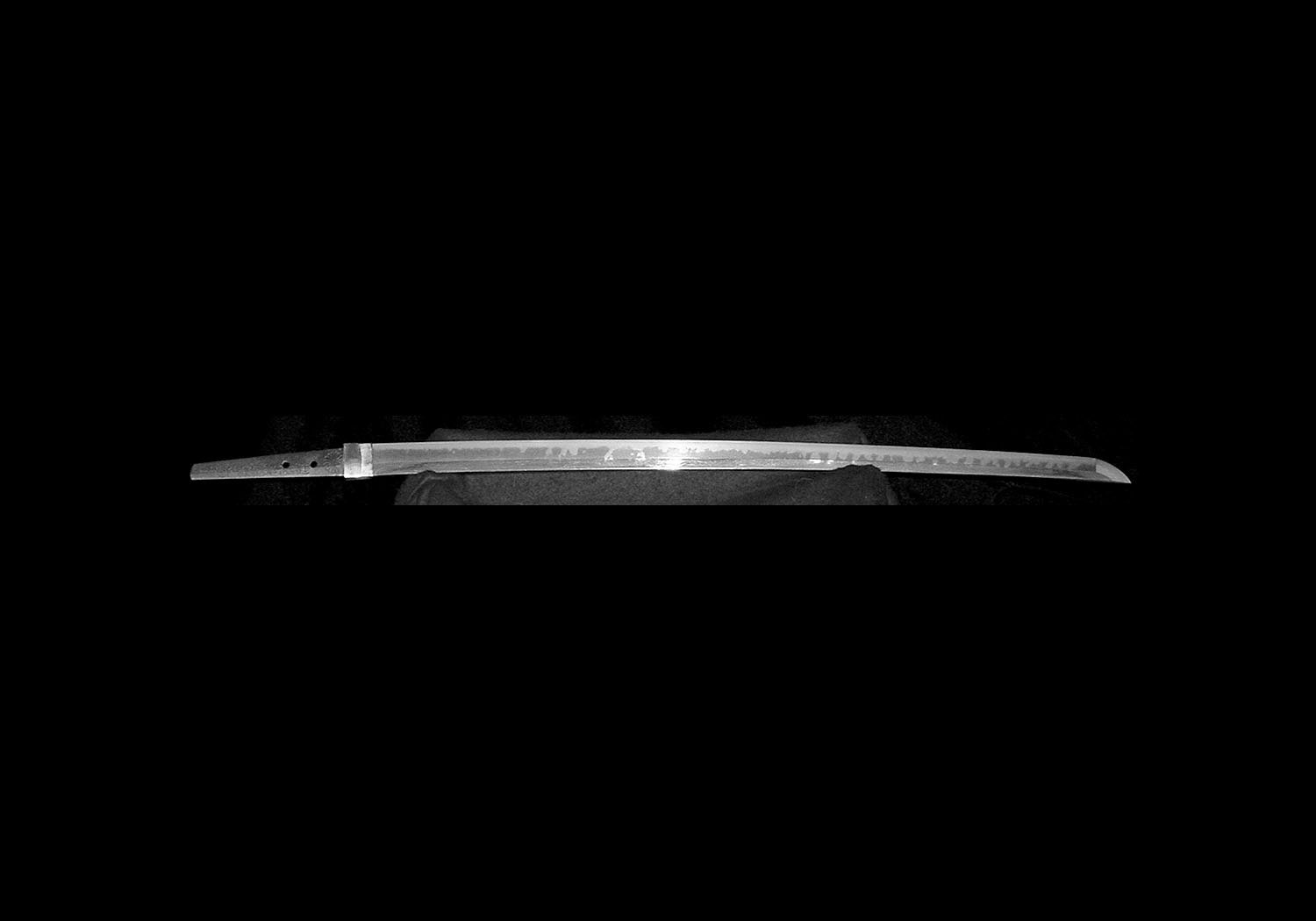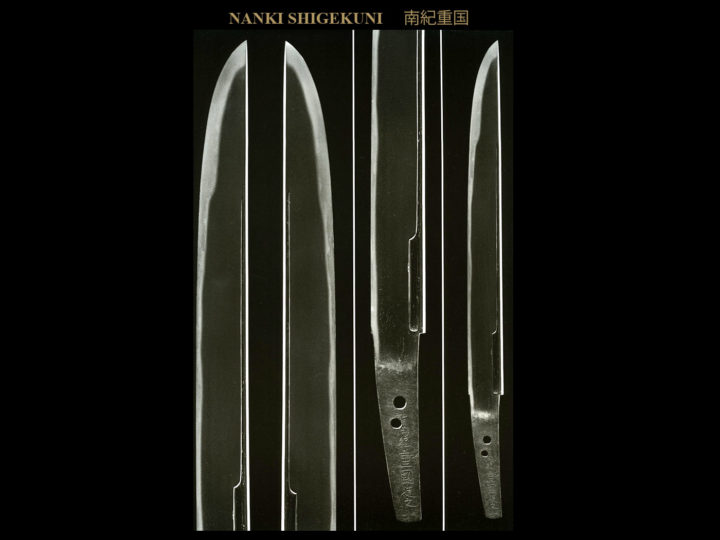
The Ishidô (石堂) school originated at the Sekido Temple in Ômi Province around the Kanei period (1624). From there the smiths went to various sections of the country to found branch Ishidô (石堂)schools. Some went to Kii Province and came to be known as the Kishû Ishidô (紀州石堂). Later Tameyasu (為康) led this group to Ôsaka. Other smiths went to Edo, the most famous of these being Ishidô Korekazu (石堂是一). Mitsuhira (光平) was one of the students of Ishidô Korekazu (石堂是一).
The Ishidô (石堂) school smiths were best known for their ability to make swords in the Bizen tradition of the Ichimonji school. They were well known for their hamon that was a robust chôji midare which sometimes reached the shinogi. Occasionally, one finds a blade that has a prominently suguha (straight) temper. This would usually indicate that it was a specially ordered blade. Their works often had fine utsuri and the best works are often mistaken for true Ichimonji works. One distinctive feature that differs from the Ichimonji school is that the hada in the shinogi ji is masame whereas in the Ichimonji school of the Koto period it would be itame. Another difference is that in Ichimonji swords the outstanding midare patterns would keep their exuberance into the bôshi while the bôshi of the Ishidô (石堂) school tend to be of a quieter and shallower midare pattern.
Mitsuhira (光平) is now thought to have been the older brother of Tsunemitsu (堂光). He worked around the middle of the 17th century. His family name was Heki (日置). He received the title of Dewa no Kami (出羽守) and was later known as Dewa Nyudo (出羽入道). He is famous for his chôji hamon and both he and Korekazu (是一) are credited with the revival of the Bizen tradition in the Shintô period. His chôji can be distinguished from the other Ishidô (石堂) smiths in that his was shaped more in a fukuro-chôji form (sack-shape chôji). This is one of the few points that separate his works from the works of his brother Tsunemitsu (堂光).
SUGATA: Tantô are rare, and shinogi-zukuri wakizashi and katana are most common. The elegant sugata reminds one of the fine works of the Koto period. The sori is shallow and the kasane tends to be thick.
JITETSU: The jigane tends to be itame or mokume or a combination of both. Sometimes there will be areas of o-mokume. The hada in the shinogi-ji will be masame. Often there is midare utsuri. overall, the jigane will be whiter than the works of the Kotô period.
HAMON: The hamon will be nioi deki. The width of the hamon varies but it will be comprised of a robust chôji-midare and midare. The chôji of Mitsuhira will be fukuro-chôji in shape. There will be no yakidashi as with other Shinto swords. The midare will start from the hamachi and develop into the chôji-midare shape. The nioi-guchi will be bright and clear and there will be little nie activities above the nioi-guchi. Most of the activities will take place within the hamon.
BÔSHI: The bôshi will be midare komi and ko-maru. The turn back will be short. Overall the bôshi will lack the robustness of the Ichimonji bôshi of the Koto period.
NAKAGO: The nakago will be made a little short and the tip will tend to be kurijiri. The yasurimei will be katte-sagari or sujikai.
MEI: Mitsuhira signed with a variety of signatures and sometimes he used a Kiku mon:
HEKI MITSUHIRA TSUKURU日置 光平造
DEWA NYUDO TAISHIN HÔKYÔ MITSUHIRA出羽入道泰信法橋光平
BUSHÛ DEWA (no) KAMI MINAMOTO MITSUHIRA武州出羽守源光平



